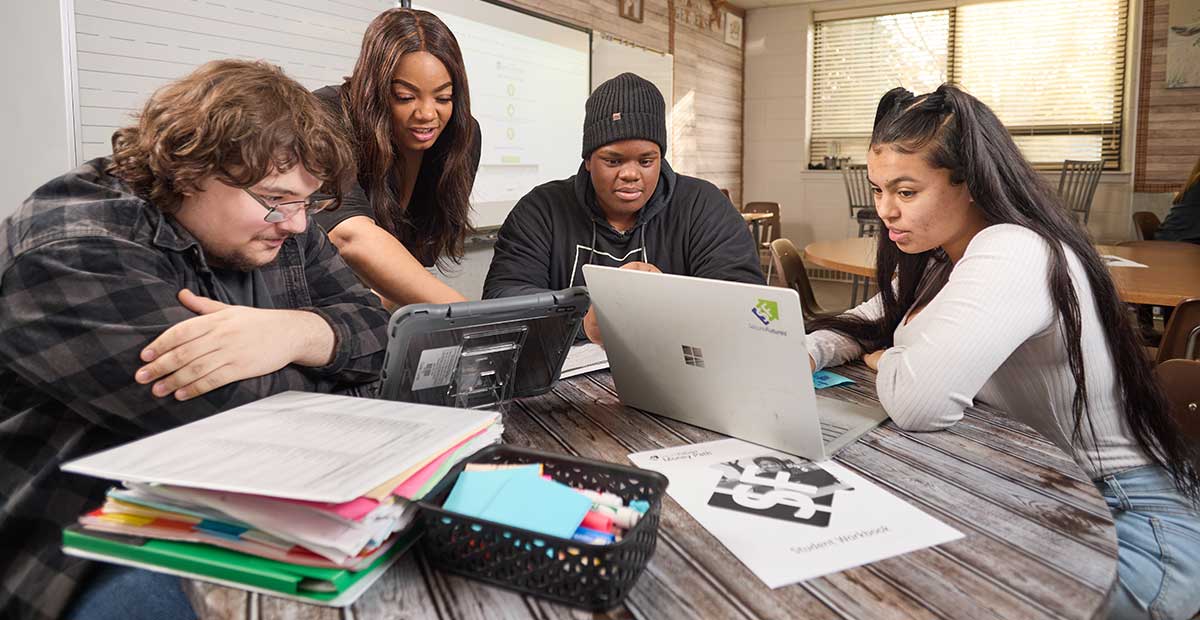Inequities in financial education for ethnic and low-income communities have life-long financial impacts
The ability to responsibly manage one’s money is a critical factor in personal success.
Putting personal finance concepts into practice allows teens to learn how to successfully manage debt, create a budget and save for needs and emergencies and make a plan for a successful future. Yet far too few Americans receive personal finance education during their K-12 years, which is a critical time for building the knowledge and skills that can support healthy long-term financial habits.
This is especially true for individuals from communities of color and for those from low-income backgrounds – both of whom are already at a disproportionately higher risk of financial insecurity.
The financial well-being of African Americans lags behind that of the U.S. population as a whole, and whites in particular. Even before the onset of COVID-19 and its wide-ranging economic consequences, a lack of financial resilience was more common among African Americans than whites in 2019, according to the TIAA Institute. The TIAA (Teachers Insurance and Annuity Association) Institute works to build critical knowledge through research pertaining to aspects of financial security.
Uneven financial literacy access increases racial wealth gap
A 2022 report by Next Gen Personal Finance shows growing momentum across the country as more states recognize the importance of guaranteeing financial literacy education for high school students. But despite this increase, significant gaps still remain, claims Tim Ranzetta, Next Gen co-founder.
The organization’s study of nearly 12,000 public high schools serving 12,135,504 high-schoolers showed access to financial literacy education to be inequitable, especially for Black, Hispanic and low-income students. In schools with more than 75 percent of students eligible for free or reduced-priced lunch, or more than three-quarters of Black and brown student populations, only one in 20 students have access to financial education courses, Next Gen’s analysis disclosed.
“So, those students who have the most demand for access and could see the highest benefits from personal finance education are getting the least of it,” said Carly Urban, an associate professor of economics from Montana State University who led the Next Gen study. Given that these same communities also have limited access to low-cost financial institutions, “We’re continuing to fail the same people that we’ve failed for years and years that have the same systemic barriers setting them up for [financial] failure,” Urban said.
Similar alarms were raised in a 2021 study by the Milken Institute, a nonprofit, nonpartisan think tank that seeks solutions to global challenges by connecting human, financial and educational resources.
In addition to the fact that many individuals lack the basic financial skills required in today’s complex financial world, Milken’s study identified wide gaps in financial literacy along racial, socioeconomic and gender lines. If left unaddressed, they warned, “these gaps will amplify existing inequalities across the population.”
Study says technology is an answer
One of the Milken study’s recommendations for improving financial literacy was the use of technology to target specific audiences. “New financial technologies [can] complement and leverage traditional financial education approaches. They are particularly useful to reach vulnerable and younger populations.”
The technology solution the Milken study recommends may very well reside in the all-new Money Path app, the most complete, integrated, and easy-to-use online financial capability solution for teens — regardless of their race, socioeconomic situation or gender.
Money Path is a cutting-edge, web-based financial education application uniquely linking academic and career planning with financial planning, allowing high school students to build a personalized plan and chart a course towards their life-long career and financial goals. Money Path helps students connect the dots between career path and pay, college expenses and student loan debt, managing a budget, and establishing a timeline for achieving important financial goals like purchasing a car or home, getting married and having children, and saving for retirement.
Meeting the needs of challenged teen audiences
While Money Path is beneficial for all teens, it is particularly valuable for under-resourced teens who may lack a financial safety net or have limited guidance for their transition to adulthood. Money Path helps students see that they have options and that – with planning – their goals are achievable. It can also serve as a catalyst for healthy conversations between students and their families, particularly in households where discussion of finances can be a source of anxiety or stress.
Finally, Money Path helps prevent the financial missteps that are often costlier for students who face barriers caused by racial, economic, and educational inequities, providing them with a clear picture of both the financial impact and the benefits of the various paths they are considering.
Money Path helps set teens on a course to reach their lifelong financial goals and strengthen their communities. And, Money Path is currently available at no cost to Wisconsin schools thanks to the generosity of sponsors. Even more significantly, students can have access to the Money Path app and its valuable planning tools as long as they need it.
Contact the SecureFutures team to find out how to bring Money Path to your students today. Learn more here or request a Money Path demonstration here.
